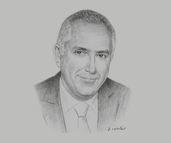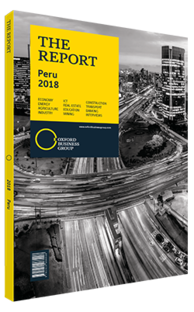Luis Marchese, President, National Society of Mining, Petroleum and Energy; and Country Manager, AngloAmerican : Interview

Interview : Luis Marchese
What are the principal regulatory obstacles faced by the mining sector, and what measures could help facilitate the licensing process?
LUIS MARCHESE: According to the central bank, the number of laws and regulations for the mining sector has increased from 28 a decade ago to 265 today. Thus, an overregulated framework is certainly a challenge for the development of mining projects. Furthermore, the number of institutions involved in the regulation of the sector has increased, further complicating the process of obtaining the different licences that are required to develop and operate a project.
The private sector is currently in discussion with the government to enhance efforts to simplify regulations, and the government is currently revising the quality of the overall framework. In addition to laws at the national level, there is also overregulation regionally. Each region has its own framework, and a lack of harmonisation in criteria makes it more difficult to operate in different areas.
How can the private and public sectors mitigate the impact of social conflicts on the development and operation of projects?
MARCHESE: The social aspect of mining developments is currently one of the main concerns for the sector. Conflicts with local communities in areas where mining projects are being developed have halted some, and caused delays in others. However, we can do more to achieve a clear regulatory framework. Over the last 15 years the private sector has incorporated a list of standards and best practices that each company is expected to meet. In this sense, self-regulation has proven successful in a number of cases and will continue to do so for as long as the financial resources are available.
With regard to the public sector, there is a need to enhance the rule of law at a state, regional and local level. The public sector must also work on strengthening civil involvement in public matters. As this grows, communities will become more understanding of mining and its benefits for society.
How do you view the opportunities for investment in brownfield and greenfield developments in the short to medium term?
MARCHESE: Investments in mining are showing an upward trend. In the final quarter of 2017 investment picked up by more than 20% year-on-year. Part of this was targeted at improving assets currently in operation, while others are aimed at developing or improving brownfield projects, and a handful focused on greenfield ventures. In the near future, one could expect investment to accelerate, especially those focused on technological innovation. Investment in greenfield projects, however, is not expected to substantially increase, given the limited amount due to be awarded in the short term. To expand the pipeline in this segment, enhancing exploration efforts is key.
What are the main challenges for watershed management in mining areas?
MARCHESE: One of the sectors with the best practices when it comes to the use of water resources is mining. Mining companies in Peru use water efficiently and cause little environmental impact on the sources and quality of tributaries. The dichotomy between mining and water resources is, therefore, false.
The challenge when it comes to watershed regulations is the fact that they are biased in favour of the agriculture sector, and do not take into account that water is used by human settlements, mining and other industries. Therefore, watershed management needs to be more technical. There is a need for integrated management of basins to determine the use of water based on their hydrology, nearby demand and other characteristics. Although this is already enshrined in law, it needs to be enforced in all basins in Peru.
You have reached the limit of premium articles you can view for free.
Choose from the options below to purchase print or digital editions of our Reports. You can also purchase a website subscription giving you unlimited access to all of our Reports online for 12 months.
If you have already purchased this Report or have a website subscription, please login to continue.

